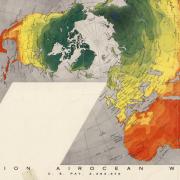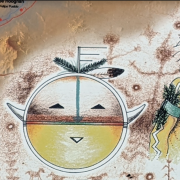Have you ever wondered what names were given by the first inhabitants to features of the natural landscape like mountains, rivers and canyons? Maps that employ Indigenous place names represent a recovery of language and tribal sovereignty.
Representation matters.
The Navajo people are called the Diné in their own language. This map is designed to teach Navajo children about their traditional homeland and language.

In this portion of the map, the city of Albuquerque is listed as Be'eldííl Dah Sinil which translates to ‘ringing sound held up high in place.’ This traditional Diné place name may refer to the prominent use of bells by the Spanish church and Albuquerque community long before its incorporation in the 19th century.
The map “Coming Home to Indigenous Place Names in Canada” lists names in the language of the Inuit and Métis people and gives a short translation of what each name means. Place names can describe the qualities of a location, relate to a sacred or historical narrative, denote a food source or all of the above.

For example, at the northern intersection of the lakes now called Michigan and Huron is Wewebjiwang, translated as “At the intermittent current, or where the current flows back and forth.”
Place names are an expression of power.
The Map Collection has a complete Indigenous Peoples Atlas of Canada containing geographical place names and their related historic and sacred narratives.

Place names symbolize an intersection of history and values.
A recent article in High Country News noted how “Place names and the stories behind them define how we perceive and connect to landscape.” Throughout the Americas, place names often validate the experience of colonizers and settlers and overwrite the culture and history of Indigenous peoples. It is a practice now under critical scrutiny.
On November 17, 2022 the Colorado Geographic Naming Advisory Board voted unanimously to change the name of an iconic 14,265-foot-tall mountain from Mount Evans to Mount Blue Sky.
Speaking to the process of renaming 650 place-names nationally that use the derogatory term ‘squaw’, Deb Haaland, the first Native American Secretary of the Interior, stated,
“I feel a deep obligation to use my platform to ensure that our public lands and waters are accessible and welcoming. That starts with removing racist and derogatory names that have graced federal locations for far too long.”
Join the discussion.
Come by the Earth Sciences & Map Library to engage our librarians about Indigenous representation and the stories behind the names of places and peoples.






